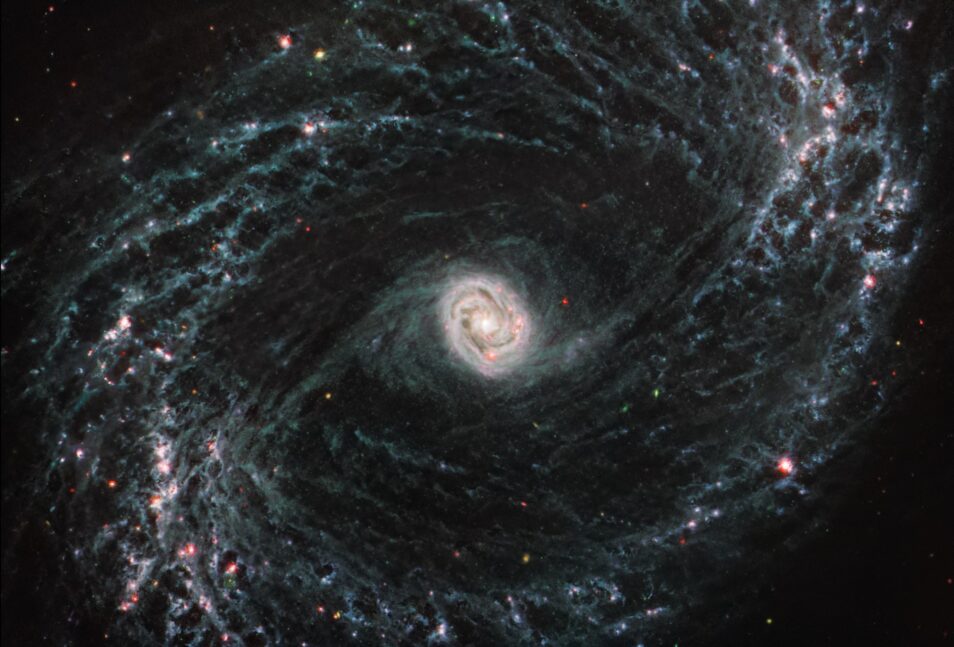This week’s satellite image is of a very beautiful spiral galaxy 46 million light-years from Earth.
Scientists used the James Webb Telescope’s mid-infrared instrument (MIRI) to take a picture of the galaxy. Several differences can be seen with previous visual observations. In the infrared image, the star-forming regions of the spiral arms glow. Young stars emit a lot of energy in the form of radiation. We cannot see this light because it is obscured by dark clouds of dust. Infrared light is not blocked by these dust clouds, so that star nurseries are clearly visible on the horizon.
A small but bright core appears in the center of the galaxy. It contains a supermassive black hole. This black hole devours matter, but also expels a modest amount of matter in extremely powerful jets. NGC 1433 plane It is only 150 light years across. This is the smallest particle flux of this type ever observed outside our Milky Way galaxy.
A special double ring can be seen around the centre. Thanks to Webb’s MIRI’s keen eye, we see that the double ring has a helical structure.
Tight spiral galaxies such as NGC 1433 and our own Milky Way have a central bar. The spiral arms of the spiral galaxy do not emanate from the center, but from the bar. This is especially good to see on optical images of the galaxy.

“Lifelong zombie fanatic. Hardcore web practitioner. Thinker. Music expert. Unapologetic pop culture scholar.”









